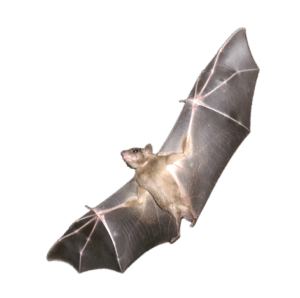When humans are infected with the Marburg virus, the result is often lethal, with hemorrhagic fever and other symptoms similar to Ebola. When bats are infected, the result is…. nothing. The tiny mammals remain asymptomatic.
In order to crack this antiviral mystery, a multi-institutional team of scientists sequenced, assembled and analyzed the genome of the bat species Rousettus aegyptiacus, a natural reservoir of Marburg virus and the only known reservoir for any filovirus.
Their findings contradicted previous hypotheses about bat antiviral immunity, which assumed that bats had enhanced antiviral defenses, controlling viral replication early in infection, and developing effective adaptive immune responses as a result. The new analysis suggests that an inhibitory immune state may exist instead.
Led by Boston University researchers Thomas B. Kepler and Stephanie S. Pavlovich, with Gustavo Palacios of the United States Army Research Institute of Infectious Diseases and others from Columbia University, the University of Nebraska, the NIH’s National Center for Biotechnology Information, and the Viral Special Pathogens Branch of the Centers for Disease Control and Prevention, the study in Cell describes several differences between immune responses in bats and humans.
Among them was an expanded and diversified KLRC/KLRD family of natural killer cell receptors, MHC class I genes, and type I interferons in the bats, which dramatically differ from their functional counterparts in other mammals.
“Such concerted evolution of key components of bat immunity is strongly suggestive of novel modes of antiviral defense,” the authors write.
The stark difference between bat and primate antiviral responses has long motivated scientists to characterize the genes involved in the immune system of bats, but previous efforts relied on genomes generated with low-coverage sequencing or with only short-read sequencing technologies. Such assemblies limit the ability to resolve repetitive regions of the genome where important immune gene loci reside, the authors note. So they turned to PacBio long-read sequencing, combined with paired-end short-reads, to generate a high-quality annotated genome for the Egyptian rousette bat. The result is a 1.91 Gb Raegyp2.0 genome, the most contiguous bat genome available.
Natural Killers

They used the genome to study two large classes of immune genes: natural killer (NK) cell receptors and type I interferons (IFNs). Previous studies have reported the absence of canonical NK cell receptors in bat genomes, and others have suggested that significant differences exist in type I IFNs between bats and humans. Diving deeper, the new study found an unusual expansion of the KLRC (NKG2) and KLRD (CD94) gene families in R. aegyptiacus relative to other species, “showing genomic evidence of unique features and expression of these receptors that may result in a net inhibitory balance within bat NK cells.”
“The expansion of NK cell receptors is matched by an expansion of potential MHC class I ligands, which are distributed both within and, surprisingly, outside the canonical MHC loci,” the authors note.
They also observed that the type I IFN locus is considerably expanded and diversified in R. aegyptiacus, with members of the IFN-u subfamily being induced after viral infection and showing antiviral activity.
“All these features strengthen the notion of the unique biology of bats and suggest the existence of a distinct immunomodulatory mechanism used to control viral infection,” the authors conclude.
“Our findings are consistent with the hypothesis that certain key components of the immune system in bats have coevolved with viruses toward a state of respective tolerance and avirulence, although tolerance is likely not the only mechanism at play.”
The team notes that definitive tests of their hypotheses may be possible with the development of further experimental reagents for cytometry and biochemical intervention, and that such reagents are being developed now with information made available by the completed genome project.
And while the genome for R. aegyptiacus is providing useful information about how bats resist viral infections, it is just one species of interest to scientists who would like to better understand the genetics of bats in order to shed light on human and ecological biology. The Bat1K initiative is an effort by more than 140 scientists around the world to decode the genomes of all 1,300 species of bats using SMRT Sequencing and other technologies.
July 13, 2018 | Plant + animal biology